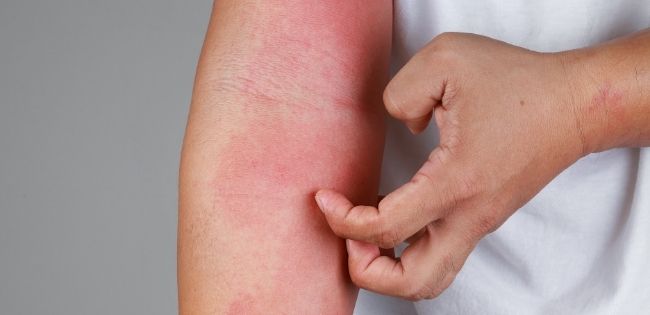Overview
Lupus is a persistent autoimmune condition that causes inflammation in different parts of the body including skin, joints, kidneys, and heart. Since it’s an autoimmune disease, it attacks the healthy tissues of the body as opposed to combating the infections. As the disease affects many parts of the body, it causes different symptoms. Lupus is challenging to diagnose as the symptoms resemble those of other diseases. Explore Cutaneous Erythematosus Lupus Clinical Trials near you to get an idea of the potential treatment options available to treat this particular condition.


What are the Types of Lupus?
Lupus is of four types, namely:
- Systemic Lupus Erythematosus
- Cutaneous Lupus Erythematosus
- Drug-Induced
- Neonatal
Out of these, Systemic Lupus is the most well-known type. Cutaneous Lupus is related to skin, Drug-Induced Lupus is caused by certain drugs. In contrast, Neonatal Lupus affects newborns of mothers who have Lupus.
Some Insights into Skin Lupus:
As previously discussed, Cutaneous Lupus is one of the four types of Lupus which mainly affects the skin. Approximately 10% of all Lupus cases are cutaneous in nature. Cutaneous Lupus is broadly classified into three types, all of which present similar symptoms including red scaly skin rash majorly due to sun exposure. The three types are as follows:
- Discoid Cutaneous Lupus: In this type, as the name suggests, the lesions are round in shape, thick and scaly. The affected individual may also experience pain, itching, and burning sensations. However, this is not always the case. Skin color changes are also very commonly observed with this type. The typically affected sites are the ears, face, and scalp. The severity of the condition might result in hair loss.
- Subacute Cutaneous Lupus: It is caused by certain medications. Subacute Cutaneous Lupus manifests as red borders around the lesion which are scaly and red in appearance. These lesions most commonly appear on the neck, chest, upper back, shoulders, and arms or areas which are more exposed to the sun.
- Acute Cutaneous Lupus: The rash associated with this type is a classic symptom of Systemic Lupus. It is known as the butterfly rash because of its appearance on the cheeks and bridge of the nose. People with this type of Lupus can develop symptoms on other sites of the body as well.
What Are The Causes of Cutaneous Lupus Erythematosus?
No definite cause for Lupus has yet been identified. However, Lupus is considered an autoimmune disease — this means that the immune system begins to attack the healthy cells of the body. Triggers usually involve:
- Sunlight
- Medications
- Infections
- Environmental triggers
The disease is most often diagnosed in females, which is why researchers are trying to find a link between the condition and the female hormone estrogen.
What Are The Symptoms to Look For?
The symptoms of CLE include:
- Red scaly skin
- Rash extending to the bridge of the nose and cheeks
These symptoms range from mild to severe with occasional flare-ups throughout life. Signs of Lupus are comparable in all types yet the rash seems different with each type.
Symptoms of Cutaneous Lupus Erythematosus can erupt following exposure to bright (UV) beams. These beams are in both the sun and bright lights. Lupus skin sores are exceptionally oversensitive to light.
Are CLE rashes Itchy?
The CLE rashes do not usually itch or hurt. However, there is a presence of discolored areas on the skin. Similarly, scarring on the scalp may irritate the hair follicles resulting in hair loss.
How Is CLE Diagnosed?
Since there are no definitive diagnostic benchmarks for CLE, the diagnosis ought to be thorough patient history, clinical appearance, lab work, and biopsy. Other tests involve ESR, C-Protein, and Complete Blood Count.
However, skin rashes are one of the key features in the diagnosis of CLE that might give an indication to the doctor on how to plan the course of treatment.
Systemic Lupus Erythematosus (SLE) Vs Cutaneous Lupus Erythematosus (CLE):
Systemic Lupus Erythematosus(SLE) is an ongoing illness that can have periods of aggravating side effects that alternate with spans of mild side effects. A great many people with SLE can carry on living a normal life with adequate treatment.
The distinguishing feature of SLE is the Butterfly rash that appears on the bridge of the nose and cheeks, mimicking the wings of a butterfly. Other symptoms of SLE are:
- Joint pain
- Fever
- Shortness of breath
- Chest pain
- Dry eyes
Both are autoimmune conditions so the significant distinction between SLE and CLE is the site of appearance. SLE affects all parts of the body including internal organs whereas CLE is confined to the skin only. It is more prevalent in females and smokers.
SLE can impact a person’s mental, physical, and social well-being as fatigue is the most prominent feature of SLE. It can make a person unproductive and negatively affect the quality of one’s life.
Can You Have SLE And CLE Together?
80% of the people affected by SLE have skin involvement (cutaneous lesions) and it is the primary indication of SLE in around one-fourth of them. It can present as LE-specific or LE-nonspecific manifestations. LE-specific sores will generally be provoked or irritated by exposure to bright radiation and are limited in sun-exposed destinations like the face, neck, V of the neck, and upper back. Likewise, people with CLE are also at a high risk of developing SLE.
Treatment Options for Skin Lupus:
As Cutaneous Lupus Erythematosus is a persistent skin condition, doctors primarily prescribe ointments to relieve the symptoms of itchiness and redness. Other treatments include antimalarial drugs and corticosteroids, both of which are considered to be highly effective in treating Lupus.
The goal is to improve the appearance of skin by limiting scarring and preventing the growth of new skin lesions. Other treatment options involve wearing sunscreen before going out in the sun and wearing sun-protective clothing.
CLE is a preventive condition that cannot be cured completely. It is essential to be prudent of the triggers that might cause a flare-up. Therefore, it is important to get yourself checked if the condition persists for more than 24 hours, as it might not be just an allergic reaction.
The Takeaway:
Living with CLE can be exhausting at times as it impacts one’s mental health and self-esteem to a great extent but taking it one day at a time is all that it takes to get through.
Although CLE is a chronic condition, it is manageable with proper care and appropriate treatment. One needs to be fully aware of his/her symptoms and report to the doctor within time to avoid complications. It is also very important to keep a track of your symptoms so that the doctor can prescribe medications accordingly.
Several Research Organizations in the US conduct Clinical Trials to treat various medical conditions. Likewise, there are multiple Clinical Research Organizations in Michigan that work towards the betterment of people affected by complex conditions like Cutaneous Lupus Erythematosus.
























